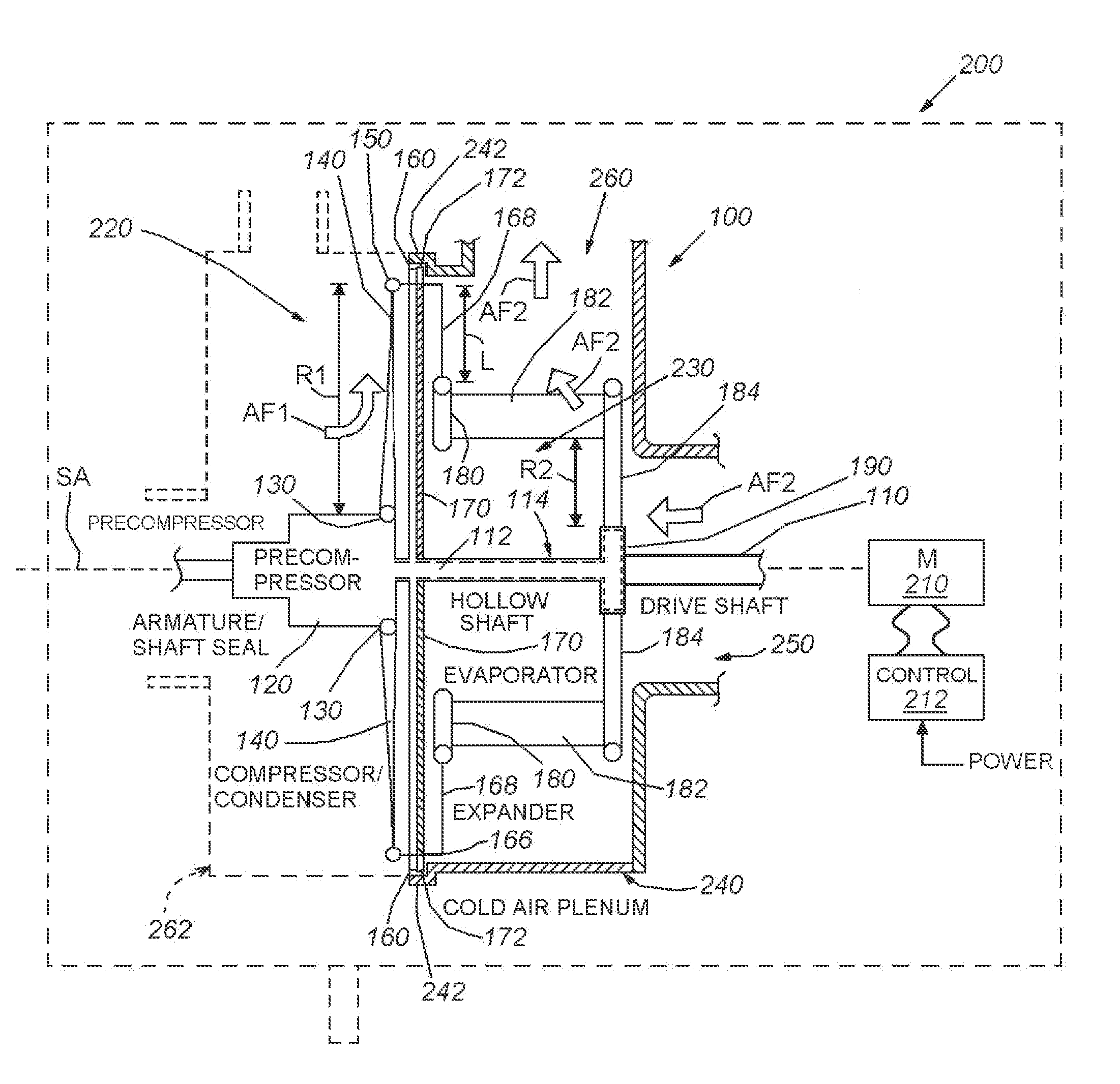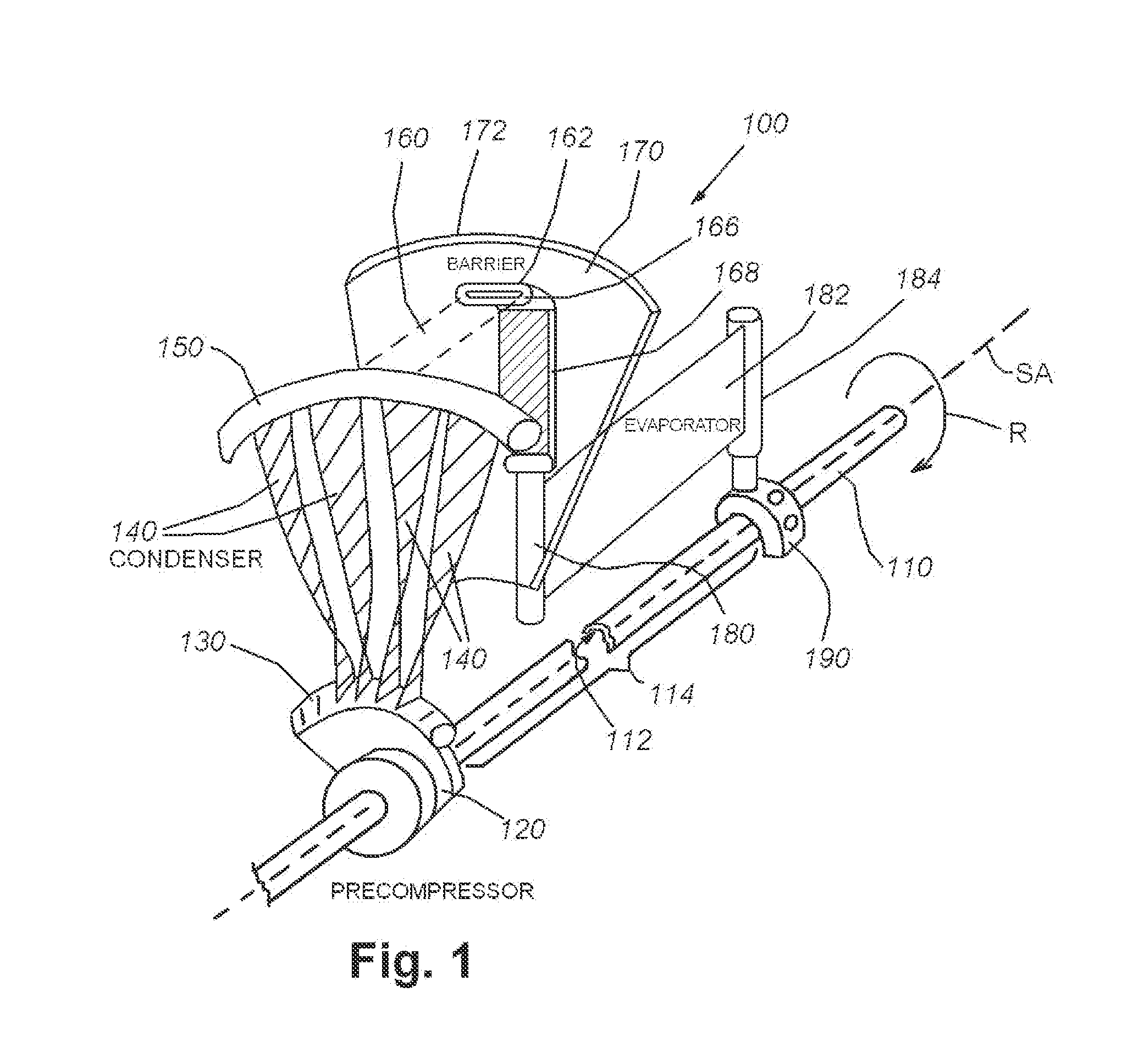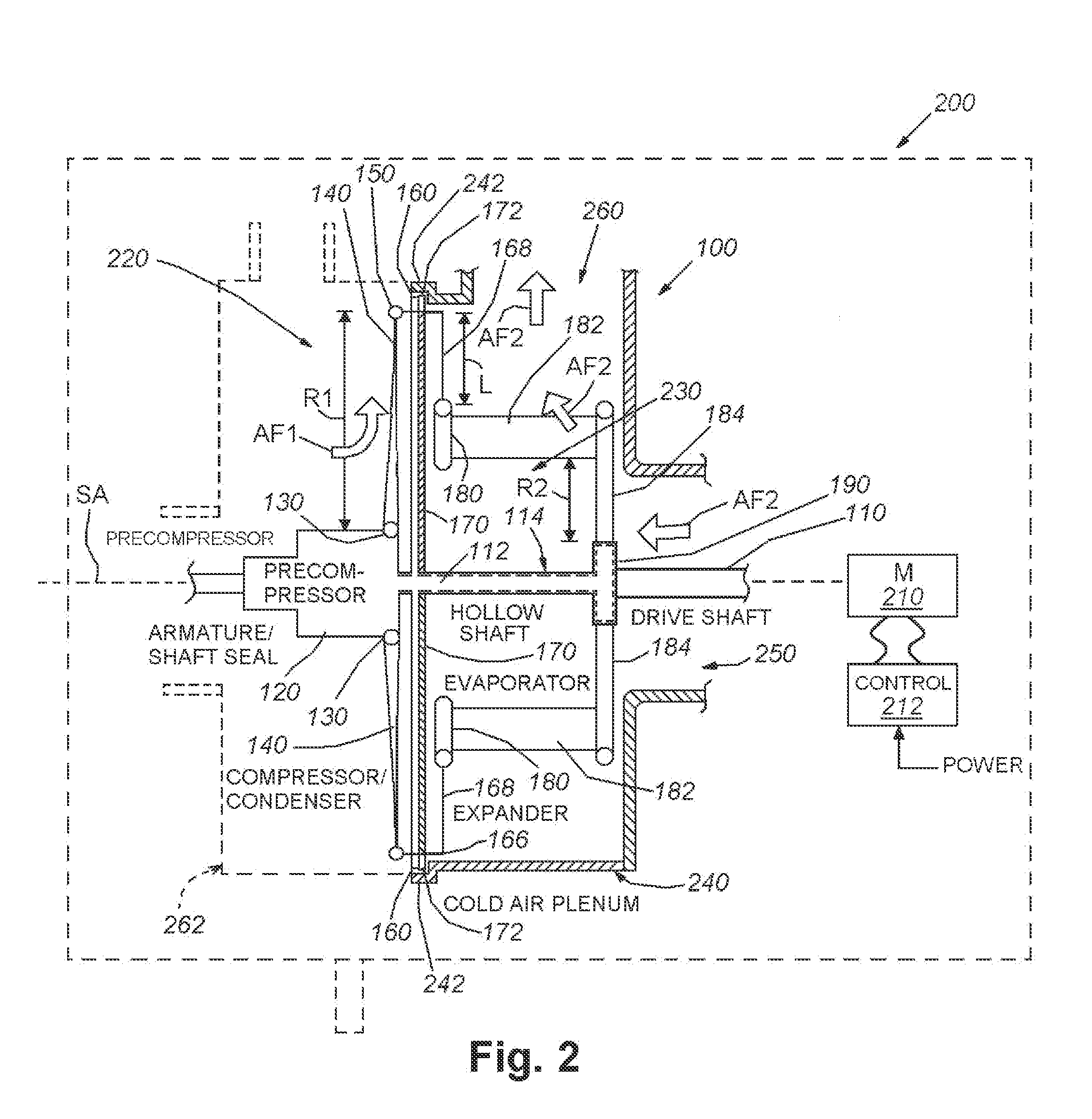Isothermal-turbo-compressor-expander-condenser-evaporator device
a technology of compressor and compressor, which is applied in the field of air conditioning, heating, heat pump, refrigeration, can solve the problems of increasing component count and cost, reducing efficiency, and requiring more energy for compression and heat expulsion until the completion of compression, so as to achieve the effect of reducing air leakag
- Summary
- Abstract
- Description
- Claims
- Application Information
AI Technical Summary
Benefits of technology
Problems solved by technology
Method used
Image
Examples
Embodiment Construction
I. ITCCEE Structure and Operation
[0022]Reference is made to an isothermal turbo-compressor-condenser-expander-evaporator (ITCCEE) device 100 shown in FIGS. 1 and 2. Similar to the above-incorporated '733 patent, describing an isothermal turbo-compressor-condenser-expander ITCCE, the illustrative ITCCEE is comprised as a rotating air-heat exchange device in which components of the heat-exchange cycle are contained integrally on the same rotating drive shaft. Notably, the illustrative embodiment of the ITCCEE is free of rotary fluid unions for increased reliability, and efficiency. To eliminate the use of rotary fluid unions, the positive displacement precompressor and evaporator are repositioned and integrated with the overall rotating, central axial assembly.
[0023]In this embodiment, the device 100 includes a drive shaft 110 that is operatively connected by any acceptable power transmission assembly to a drive motor 210 that rotates (curved arrow R) the shaft at a fixed, or typicall...
PUM
 Login to View More
Login to View More Abstract
Description
Claims
Application Information
 Login to View More
Login to View More - R&D
- Intellectual Property
- Life Sciences
- Materials
- Tech Scout
- Unparalleled Data Quality
- Higher Quality Content
- 60% Fewer Hallucinations
Browse by: Latest US Patents, China's latest patents, Technical Efficacy Thesaurus, Application Domain, Technology Topic, Popular Technical Reports.
© 2025 PatSnap. All rights reserved.Legal|Privacy policy|Modern Slavery Act Transparency Statement|Sitemap|About US| Contact US: help@patsnap.com



